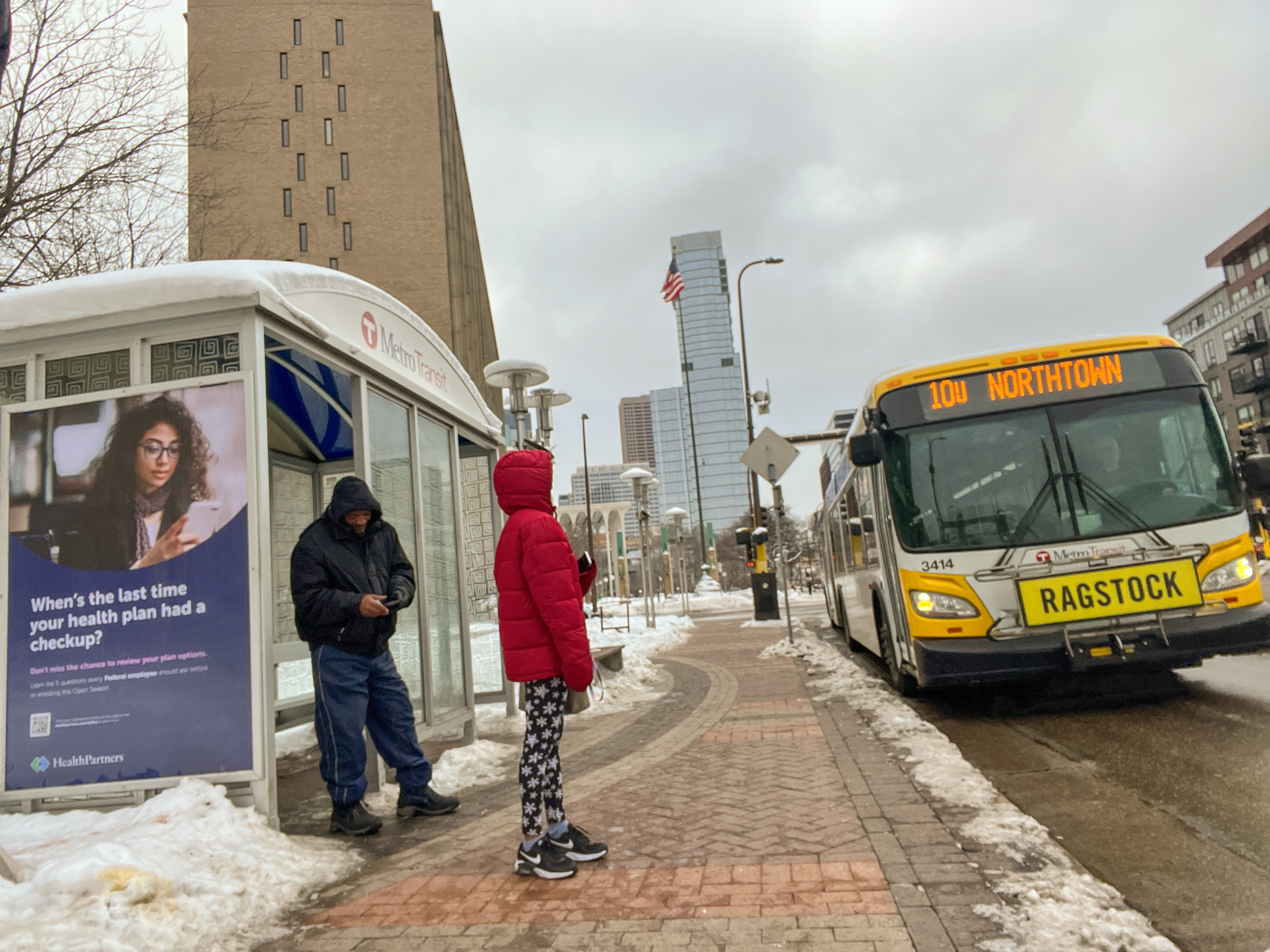
Metro Transit is on a mission to create better bus stops – and that means ensuring they can be used by anyone.
To support ongoing accessibility improvements, staff visited more than 900 bus stops to begin gathering data about existing conditions and created guidelines for prioritizing future bus stop investments.
“The guidelines give us a starting place for creating a systemwide to-do list, prioritizing bus stops that most affect customers,’’ said Berry Farrington, who works in Engineering & Facilities and manages the Better Bus Stops program.
The new guidelines consider boardings and how frequently a stop is used by customers with mobility devices. In a 2021 survey, nearly two in ten customers indicated they have a disability.
To improve accessibility, the agency may install concrete pads that provide a level boarding area, install a shelter with a smaller footprint, or put a smaller bench within the shelter, providing more space for mobility devices.
In 2022, excluding new METRO D Line stations, concrete pads were added to 18 locations and 70 shelter benches were modified. Another 30 sites are due to see boarding area improvements in 2023.
“Ensuring our bus stops are accessible to everyone is a priority for Metro Transit, and the concerted effort to set agency accessibility guidelines over the last few years shows that," said Guthrie Byard, the Council's ADA & Title VI Administrator.
Efforts to add and replace shelters also continue.
In 2022, 25 shelters were added in locations where they had not previously existed, and 33 aging shelters were replaced. Solar-powered lighting was added at 19 shelters, primarily in North Minneapolis, Brooklyn Center, and Brooklyn Park.
After years of concerted improvement efforts, about two-thirds of boardings now occur at bus stops with shelters. Generally, shelters are considered at locations with at least 30 boardings a day.
Shelters have also been improved by:
- Applying removable artwork, created by local artists, to help deter graffiti
- Transitioning to clear glass panels that are more readily available when repairs are needed
- Reviving the Adopt-A-Stop program, which encourages residents to help clear litter and report damage
Learn more about the Better Bus Stops program
Learn more about the Adopt-A-Stop program
Previously: What makes a great bus stop? New guide provides the answer